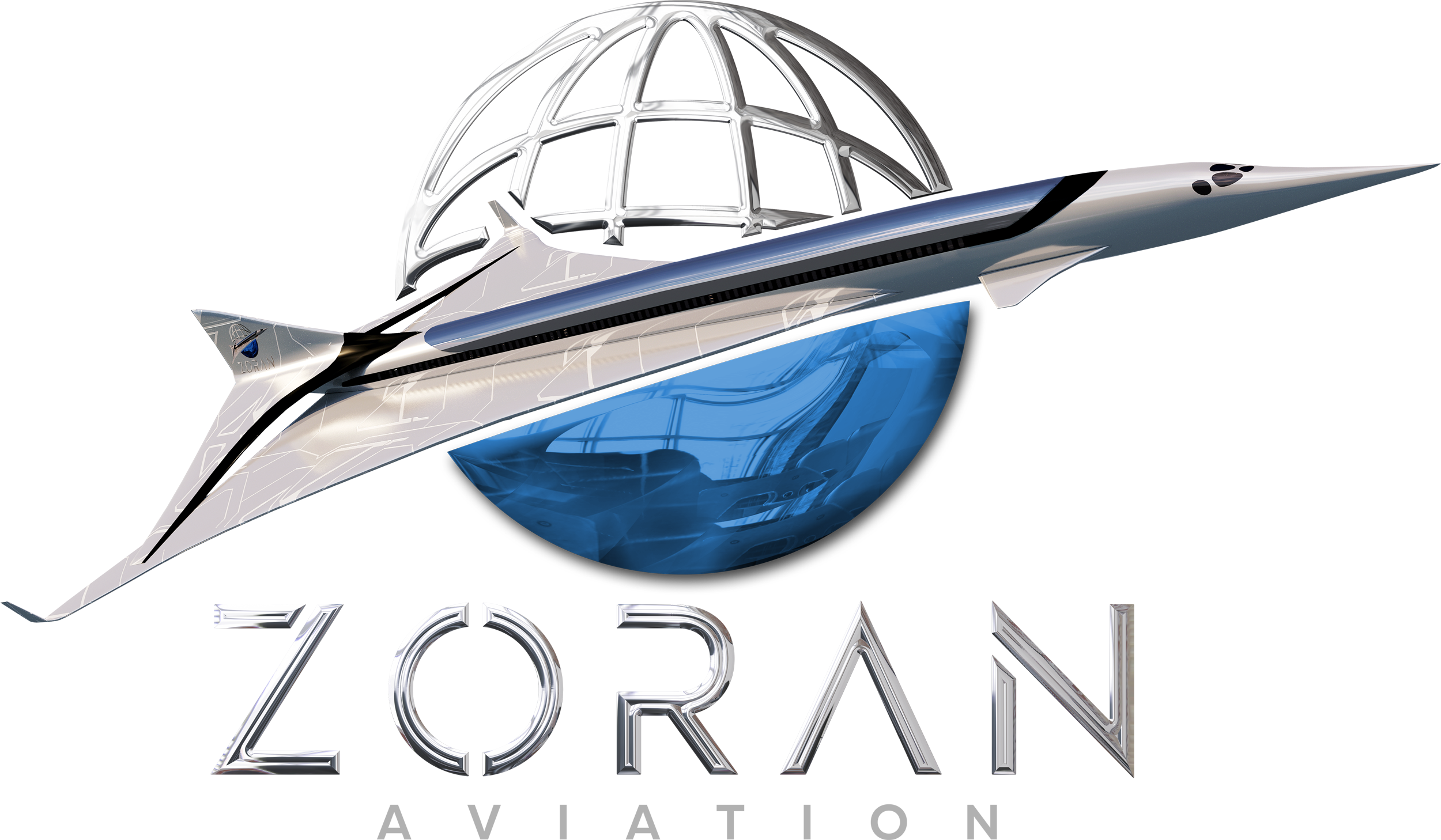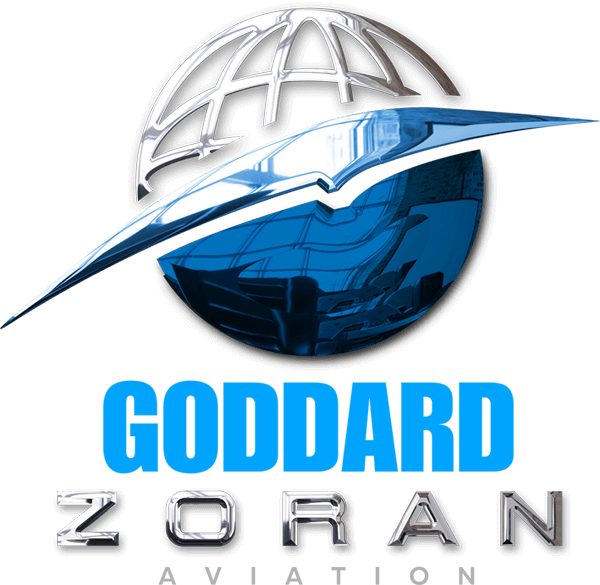SUPERSONIC AVIATION
Sustainable Aircraft

The Electric Vertical Take Off and landing vehicle sector is the most exciting and important development in transport. Carrying passengers and freight without burning fossil fuels it is bringing science fiction to the present day.
SUPERSONIC AVIATION
Sustainable Aircraft

The Electric Vertical Take Off and landing vehicle sector is the most exciting and important development in transport. Carrying passengers and freight without burning fossil fuels it is bringing science fiction to the present day.
ZORAN 1
Supersonic Jet
However, given advances in materials and engine technology and the expansion of the global economy, the demand for direct travel between international hubs such as Tokyo, New York, Shanghai, London and Hong Kong has only increased as business commuters seek to make the journey in hours rather than days.
As a consequence, many leading players within the aerospace sector have rekindled their competitive interest in the sector as the skies reopen to a second age of supersonic flight.
ZORAN USMU
Next era of private aviation
With its lighter, faster configuration this jet will be able to fly from Dubai to Miami in under six hours without stopping to refuel.
As the Asian tigers rise and the pace of business swiftens, so the dream of same-day transcontinental travel has returned.
As a consequence, many leading players within the aerospace sector have rekindled their competitive interest in the sector as the skies reopen to a second age of supersonic flight.
Projected performance:
- Crew: 2
- Capacity: 6-8 passengers
- Length: 34 m
- Wingspan: 20 m
- Height: 8 m
- Max takeoff weight: 46,000 kg
- Fuel capacity: 20,000 kg
- Interior: 10 m × 2 m × 2 m
Projected performance:
- Supersonic cruise speed: Mach 1.8
- Range: 12,000 km at Mach 1.6
- Due to enter service: 2029
ZORAN USMU
Next era of private aviation
With its lighter, faster configuration this jet will be able to fly from Dubai to Miami in under six hours without stopping to refuel.
As the Asian tigers rise and the pace of business swiftens, so the dream of same-day transcontinental travel has returned.
As a consequence, many leading players within the aerospace sector have rekindled their competitive interest in the sector as the skies reopen to a second age of supersonic flight.
Projected performance:
- Crew: 2
- Capacity: 6-8 passengers
- Length: 34 m
- Wingspan: 20 m
- Height: 8 m
- Max takeoff weight: 46,000 kg
- Fuel capacity: 20,000 kg
- Interior: 10 m × 2 m × 2 m
Projected performance:
- Supersonic cruise speed: Mach 1.8
- Range: 12,000 km at Mach 1.6
- Due to enter service: 2029
ZORAN 1
Twice as far in half the time
As it would cruise at Mach 2 it could fly from London to New York or Dubai in just over two hours or from Beijing to Tokyo in just over an hour. Lighter, stronger and faster than its processor, it would provide superior competition in terms of economy, capacity and price point than its current rivals.
“FOR A PLANE THIS VALUABLE, A STATE-OF-THE-ART CLIMATE-CONTROLLED SECURE HANGAR COULD BE A WISE INVESTMENT. EQUIPPED WITH THE LATEST CENSORS AND DETECTROS, THIS NEXT GENERATION HANGAR EVEN PERFORMS YOUR PRE-FLIGHT AIRCRAFT MAINTENANCE CHECKS FOR YOU.“
“FOR A PLANE THIS VALUABLE, A STATE-OF-THE-ART CLIMATE-CONTROLLED SECURE HANGAR COULD BE A WISE INVESTMENT. EQUIPPED WITH THE LATEST CENSORS AND DETECTROS, THIS NEXT GENERATION HANGAR EVEN PERFORMS YOUR PRE-FLIGHT AIRCRAFT MAINTENANCE CHECKS FOR YOU.“
TITANS RETURN TO THE HEAVENS
Mach 2.0 & beyond
TITANS RETURN TO THE HEAVENS
Mach 2.0 & beyond
A SUPERSONIC AIRLINER WITH UNRIVALLED PEDIGREE
Lighter, stronger, faster
A SUPERSONIC AIRLINER WITH UNRIVALLED PEDIGREE
Lighter, stronger, faster
The efficiency of a plasma rocket is determined by a number of factors, including the temperature of the plasma, the strength of the magnetic field, and the design of the Goddard engine which will use an ultra-high temperature plasma and a 100 Tesla magnetic field to produce unprecedented thrust.

ZORAN ULTIMATE GODDARD
Plasma Propulsion Spacecraft
Plasma rocket propulsion theory
The basic theory behind plasma rocket propulsion is that it uses electric fields to ionise a gas, turning it into a plasma, which can then be accelerated using magnetic fields. The process begins with a gas, typically a noble gas like xenon, which is injected into a chamber called the ionisation chamber. Inside this chamber, a high voltage is applied to the gas, which strips electrons from the gas atoms, ionising it and turning it into a plasma.
The efficiency of a plasma rocket is determined by a number of factors, including the temperature of the plasma, the strength of the magnetic field, and the design of the Goddard engine which will use an ultra-high temperature plasma and a 100 Tesla magnetic field to produce unprecedented thrust.

ZORAN
ULTIMATE GODDARD
Plasma Propulsion Spacecraft
Plasma rocket propulsion theory

The efficiency of a plasma rocket is determined by a number of factors, including the temperature of the plasma, the strength of the magnetic field, and the design of the Goddard engine which will use an ultra-high temperature plasma and a 100 Tesla magnetic field to produce unprecedented thrust.
The basic theory behind plasma rocket propulsion is that it uses electric fields to ionise a gas, turning it into a plasma, which can then be accelerated using magnetic fields. The process begins with a gas, typically a noble gas like xenon, which is injected into a chamber called the ionisation chamber. Inside this chamber, a high voltage is applied to the gas, which strips electrons from the gas atoms, ionising it and turning it into a plasma.
ZORAN
ULTIMATE GODDARD
Plasma Propulsion Spacecraft
Plasma rocket propulsion theory
The efficiency of a plasma rocket is determined by a number of factors, including the temperature of the plasma, the strength of the magnetic field, and the design of the Goddard engine which will use an ultra-high temperature plasma and a 100 Tesla magnetic field to produce unprecedented thrust.
The basic theory behind plasma rocket propulsion is that it uses electric fields to ionise a gas, turning it into a plasma, which can then be accelerated using magnetic fields. The process begins with a gas, typically a noble gas like xenon, which is injected into a chamber called the ionisation chamber. Inside this chamber, a high voltage is applied to the gas, which strips electrons from the gas atoms, ionising it and turning it into a plasma.

